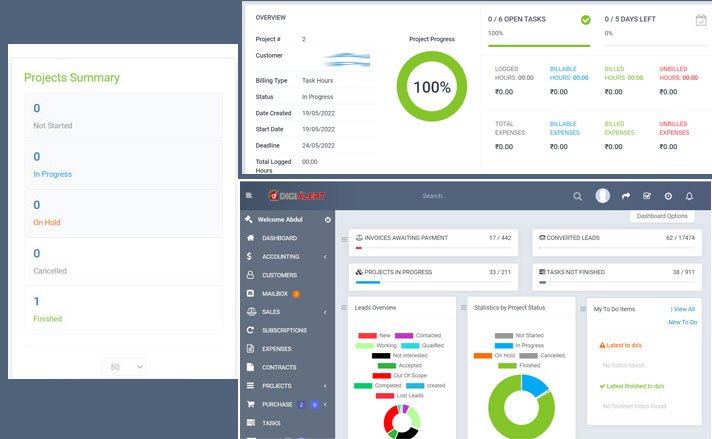Mobile Application Penetration Testing
Mobile Application Penetration Testing
WHAT IS
Mobile Application Penetration Testing
Mobile security penetration testing is a critical aspect of our service offerings and it includes identifying the scope of the testing, followed by a vulnerability assessment to identify known vulnerabilities and attempt to exploit them. Once vulnerabilities are identified, our team will assess their impact and provide recommendations for mitigating or eliminating them.
It's important to note that mobile security penetration testing is just one part of a comprehensive security strategy. Our team of experts will work closely with clients to conduct regular security assessments, keep their systems and applications up to date, and provide employee training on how to identify and report potential security risks. By implementing a robust and regularly updated security program, organizations can better protect against potential threats and ensure the security and integrity of their sensitive data.
Speak to an expert
key features
Mobile Application Penetration Testing
Types of
Mobile Application Penetration Testing
At digiALERT, we understand the importance of keeping your mobile applications and data secure, which is why we offer a comprehensive approach to mobile application security. Our team of experts will work closely with you to ensure that all aspects of mobile application security are considered and implemented.
-
Network security: We make sure that the mobile device's network connection is protected and the data transmitted over that connection is secured. This includes using secure communication protocols, such as HTTPS, to encrypt data in transit, and securing Wi-Fi connections.
-
Data security: We protect the data stored on a mobile device, as well as the data transmitted to and from the device. This includes encrypting sensitive data, such as user credentials, and implementing secure data storage and transmission mechanisms.
-
Device security: We safeguard mobile devices against physical threats, such as theft or tampering, as well as cyber threats such as malware. This can include implementing device management solutions and implementing security features, such as passcodes, on mobile devices.
-
Application security: We secure the mobile app itself, as well as the data it handles. This includes implementing secure coding practices, such as input validation and data sanitization, and testing mobile apps for vulnerabilities.
-
Identity and access management: We control and manage access to mobile apps and devices. This includes authenticating users and controlling their access to specific resources. This can include implementing multi-factor authentication, and implementing access controls, such as role-based access controls.
Statistics on
Mobile Application Penetration Testing
Speak to an expert
what are the
tests we do ?
OWASP Top 10 for Android and IOS is a list of the most critical security risks for Android mobile applications. The latest version, OWASP Top 10 Mobile Risks (2016), includes the following risks:
- Improper Platform Usage: Misuse of platform features and APIs, leading to security vulnerabilities.
- Insecure Data Storage: Improper storage of sensitive data, making it vulnerable to theft or exposure.
- Insufficient Cryptography: Weak encryption of sensitive data, making it vulnerable to interception or tampering.
- Insecure Communication: Lack of secure communication between the app and the server, making data vulnerable to interception.
- Client-side Injection: Injection of malicious code into the app, leading to security breaches.
- Broken Cryptographic Protection: Weaknesses in cryptographic protection, making sensitive data vulnerable to theft or exposure.
- Security Decisions via Untrusted Inputs: Making security decisions based on untrusted inputs, leading to security vulnerabilities.
- Lack of Binary Protections: Lack of protections for the app's binary code, making it vulnerable to reverse engineering and tampering.
- Poor Authorization and Authentication: Improper authorization and authentication mechanisms, making it easier for attackers to access sensitive data.
- Broken Session Management: Weaknesses in session management, making sensitive data vulnerable to theft or exposure.
How do we do
Mobile Application Penetration Testing
- We thoroughly assess all third-party libraries and frameworks used in the development of our client's mobile applications to ensure that they do not contain any known vulnerabilities.
- We employ a variety of techniques to prevent common attacks such as SQL injection and cross-site scripting (XSS), including proper input validation, parameterized queries, and output encoding.
- We take great care to properly encrypt sensitive data, both in transit and at rest, and use secure communication protocols such as HTTPS.
- We implement robust authentication and authorization controls to ensure that only authorized users have access to sensitive information and functionality.
- We perform regular security testing and vulnerability assessments on our client's mobile applications to identify and remediate any potential issues
WHY MOBILE APPLICATION PENETRATION TESTING
WHO NEEDS MOBILE APPLICATION PENETRATION TESTING
Mobile application security is important because mobile devices have become a primary means of accessing sensitive information, such as personal and financial data. As a result, mobile apps are increasingly being targeted by cybercriminals looking to steal this information or disrupt the app's functionality. Additionally, mobile devices often have access to sensitive information stored on the device, such as contacts, photos, and location data, which can be compromised if the device is lost or stolen.
Mobile application security is necessary for everyone who uses a mobile device, including individuals, businesses, and government organizations. For individuals, mobile app security can help protect personal information and financial data from being stolen by cybercriminals. For businesses, mobile app security is important to protect company data and to ensure that the apps used by employees do not pose a security risk to the organization. For government organizations, mobile app security is critical to protecting sensitive information and to maintaining the trust of citizens. Overall, mobile application security is necessary to protect the confidentiality, integrity, and availability of sensitive information stored on mobile devices and in mobile apps.
How often is Mobile Application Penetration Testing recommended
When it would be performed
The frequency of mobile application penetration testing for an organization should be determined based on a variety of factors, including the risk level of the organization's mobile apps and devices, the need for change management, compliance requirements, and the evolving threat landscape. Higher risk organizations, such as those handling sensitive data or operating in regulated industries, may need to conduct pen testing more frequently to ensure their systems are secure. It is also important to conduct pen testing after any changes to mobile apps or devices, and to meet any compliance requirements for the industry in which the organization operates. Additionally, the constantly evolving threat landscape for mobile devices may require more frequent pen testing to ensure the security of systems. In general, it is recommended that organizations conduct mobile application penetration testing at least annually, and more frequently if any of these factors apply.
Speak to an expert
How are we
unique
- We have a team of highly experienced and certified professionals who have in-depth knowledge of mobile application security.
- We use a combination of manual and automated testing techniques to thoroughly assess the security of mobile applications.
- We provide detailed reports with actionable recommendations to help our clients improve the security of their mobile applications.
- We offer flexible engagement models to suit the needs of our clients, including on-demand, project-based, and retainer-based services.
- We provide round-the-clock support to ensure that our clients' mobile applications are always secure.
- We have a proven track record of helping our clients secure their mobile applications and prevent data breaches.
- We offer competitive pricing for our mobile application security services, making them accessible to businesses of all sizes.
- We have a customer-centric approach, ensuring that our clients receive personalized and timely support.
- We use industry-leading tools and technologies to perform our assessments, ensuring that we provide the highest quality service.
- We have a commitment to continuous learning and staying up-to-date with the latest security threats and best practices in the field.













 ISO/IEC 27001:2022
ISO/IEC 27001:2022 ISO/IEC 27001:2022
ISO/IEC 27001:2022 ISO/IEC 20543:2019
ISO/IEC 20543:2019 ISO/IEC/IEEE 29119-5:2024
ISO/IEC/IEEE 29119-5:2024 CSA Certificate
CSA Certificate Incorporation
Incorporation Makeinindia
Makeinindia Authorized partner
Authorized partner MSME Chennai
MSME Chennai digiALERT Tan
digiALERT Tan GST Chennai
GST Chennai Pancard
Pancard Amended GST
Amended GST